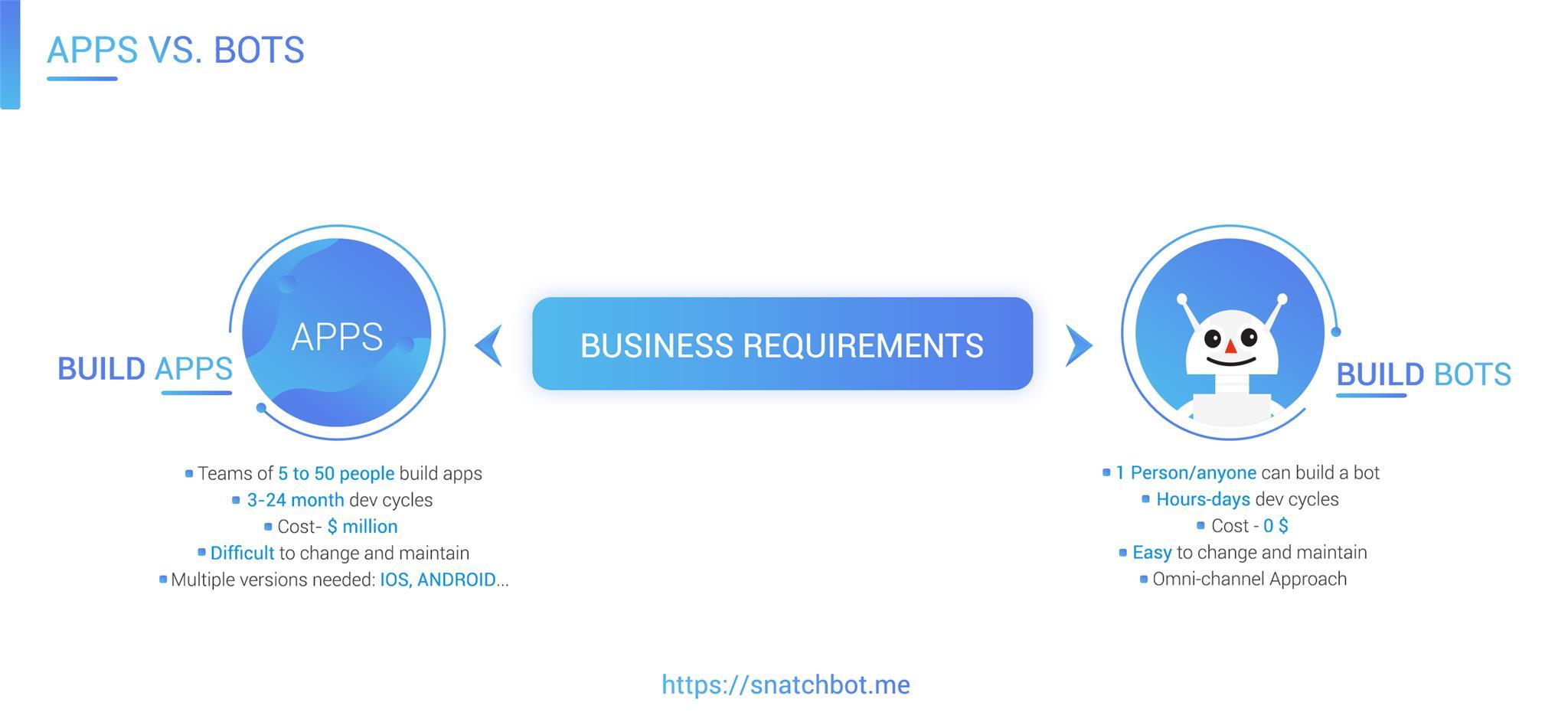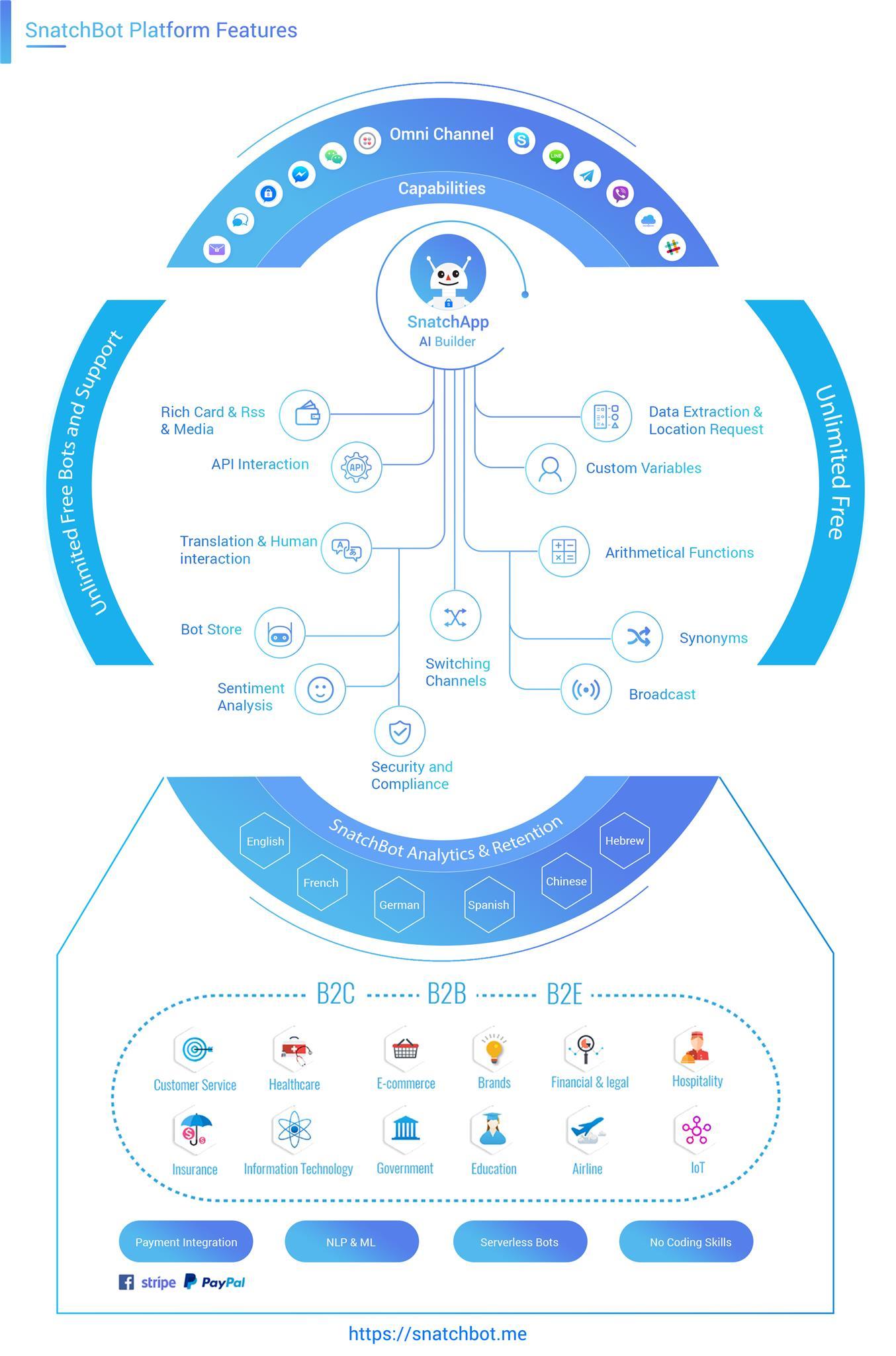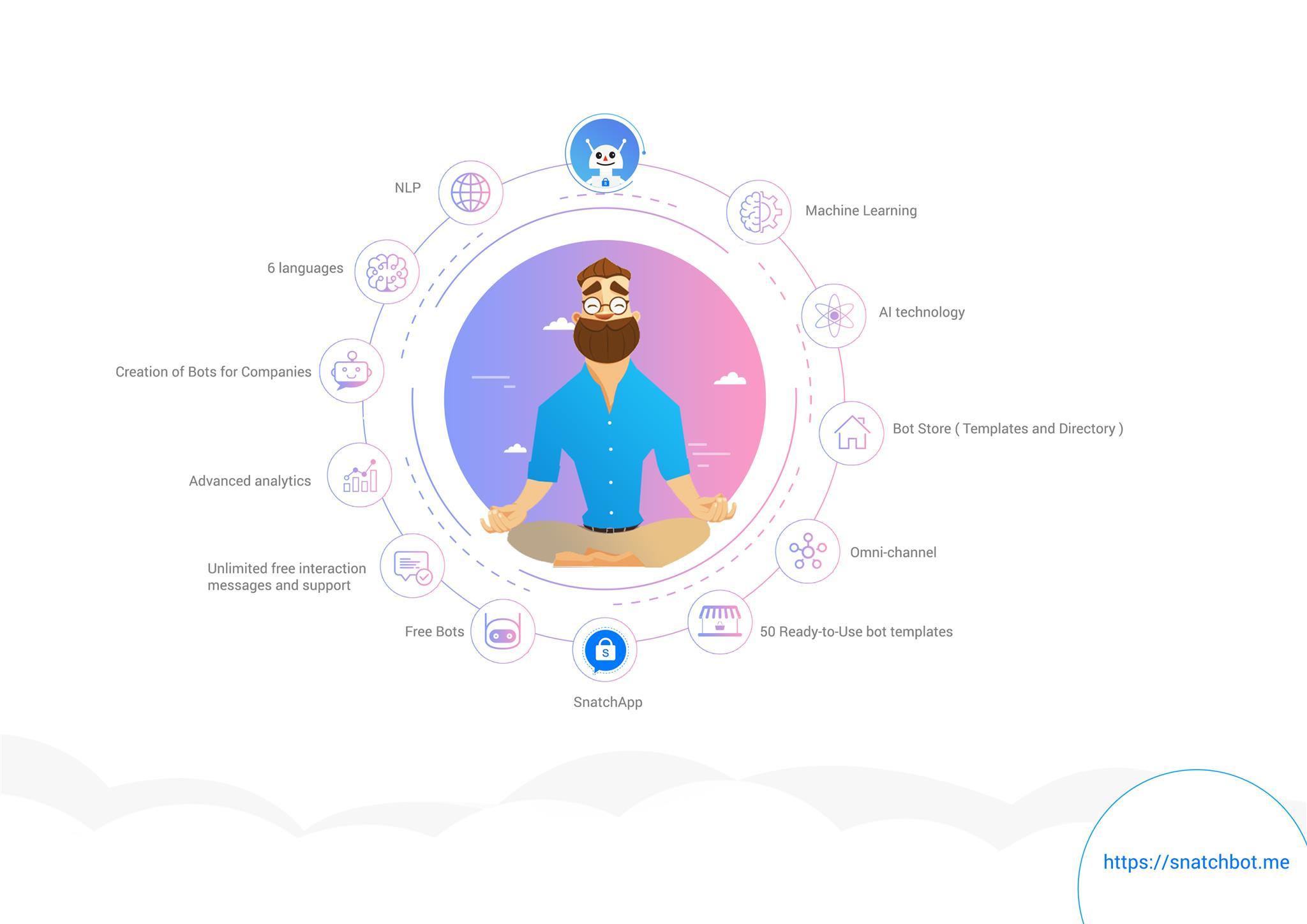
AI is Fundamentally Changing the Way We Do Business: How SnatchBot Created a Market-leading Solution
Suppose you want information from an organisation. And you want it fast. If you phone, you might have to navigate through an answer system that eventually puts you on hold. If you go on the website, you have to search through the links. You don’t want to download yet another app. So if you have the option of using your favourite social media channel to have a friendly conversation with a representative, you’ll take it. Even if the representative is an intelligent chatbot.
This is why smart, omni-channel chatbots are the future of communication.
Moreover, chatbots are not just good at providing information. They can take payments, manage bookings, update files, broadcast messages to user lists, issue tests to students and, in short, perform any task that currently takes place online. Perhaps most importantly of all, chatbots are ideal for collecting user data in a GDPR compliant way, data that can improve every aspect of an organisation: financial, operational and marketing.
Chatbots and AI become a must
Just as the internet and smartphone technology revolutionised businesses, so will chatbots and AI. This is recognized by the market: global funding for AI startups is rocketing and many investors insist on AI being present in some form in business plans.
SnatchBot provides a clear example of this trend. Since launching our chatbot building platform a year ago, over 14,000 bots have been built with our tools. 40 million interactions have taken place involving these bots, for companies such as Accenture, Allianz, Aman Bank, Uber, Veolia and Vodafone. And to judge by the proportion of users signing off with ‘thank you’, these bots are scoring an 80% success rate.

Why is SnatchBot witnessing such rapid growth?
There are three key factors at play here.
Firstly, we achieved our goal of removing the need to have coding experience in order to build chatbots while providing an intuitive platform to our users. By providing simple tools for constructing conversations, we have opened the door to a mass participation in chatbot creation.
Secondly, our decision to make our chatbots omni-channel has proven crucial. Without any need to redesign it, the same bot can easily be added to a website, Skype account, Slack, Twilio, Messenger and our proprietary messaging platform, SnatchApp. And we are adding more channels all the time. With Messenger bots having suffered a recent blow, the importance of our approach has been massively underscored.
Thirdly, we invested heavily in a state-of-the-art Natural Language Processing (NLP) system, which — uniquely among chatbot platforms — operates in 130 languages and offers pre-trained NLP models and Machine Learning.
Also important has been the fact that we provide templates of sophisticated chatbots for a variety of uses in our bot store; we offer a wide number of plugins; our platform is the only one available beyond usual English speaking world (currently you can build bots in 130 languages and access the platform in French, English, Portuguese, German, Spanish and Chinese); we have reliable customer support and we are free to use. As Avi Ben Ezra, CTO and Founder of SnatchBot explains, “our success is based on a simple but important consideration: our platform has all the features that companies have longed for.”

Chatbots bring Return on Investment
The benefits from using chatbots are tangible. Vedic Maths, for example, needed to administer tests to their students. For an outlay of less than $500, they now have a dozen chatbots offering tests and giving back scores. This has freed hundreds of hours of staff time, which represents ongoing savings as well as more staff time for addressing complex student needs.
At SnatchBot we help clients focus on revenue growth. And the kind of savings a chatbot can bring can be understood with an example. Suppose a 200-strong call centre team introduce a chatbot for basic queries. A conservative estimate from our own user feedback is that 20% of customers would be willing to talk to the bot if that were an option (this will grow towards 100% as people become more familiar with chatbots).
If we assume a cost per employee of $50k then a 20% figure for chatbot use amounts to annual cost savings of $2M. Or if the improved, swifter, service leads to a growth in enquiries and we assume some staff are retained for these, then a 25% increase in calls from non-customers will result in labour and recruitment savings of $330,000.
NLP and Machine Learning (ML)
Today, very few platforms really offer powerful NLP and ML capabilities. Yet companies want to provide really positive customer experiences and for that, you need the chatbot to be able to analyse responses and not just follow a script. With our NLP, for instance, chatbots can easily detect frustration and if so, offer to contact a human to take over the conversation.
Smart use of NLP allows for the creation of sophisticated chatbots that can engage customers. For customers, this means they end with subscriptions to topics that genuinely interest them. For businesses, this means being able to communicate — in person — far more effectively via chatbot broadcasts than via a traditional advertisement aimed at an anonymous crowd.
Being able to increase sales, reduce operational costs and better run financial and marketing strategies can now be done in the most cost-effective way via chatbots. This is where SnatchBot comes into play and it is why SnatchBot has created a leading market solution adopted not only by the biggest companies the world over, but small to mid companies as well.

Henri Ben Ezra, CEO SnatchBot
